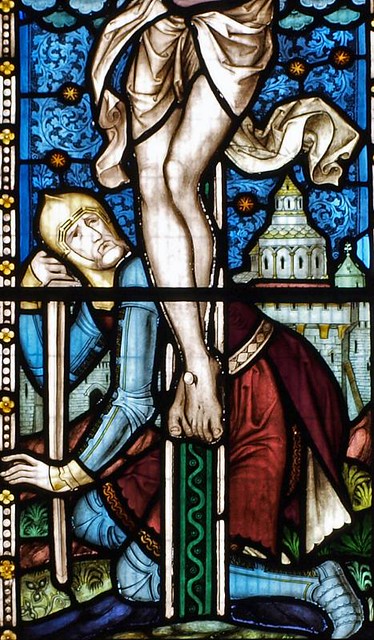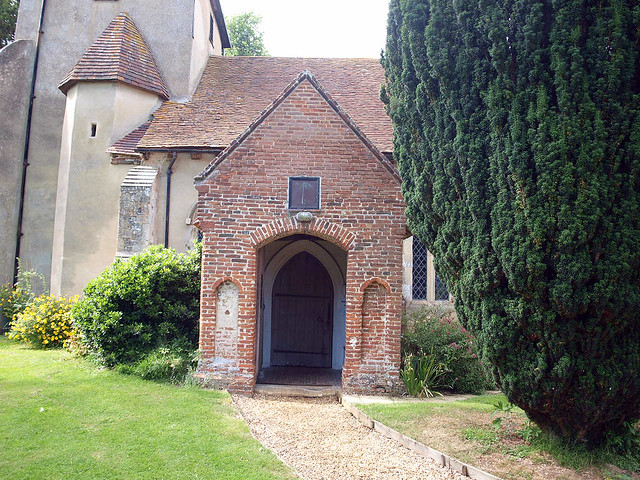That aside having created a Flickr album for my Hardman windows I noticed that I had two almost identical east windows by the studio which I think were probably designed by John Powell.
The first is the east window Crucifixion at Great Henny, Essex made in 1860. The left light shows the BVM, the centre light contains the Crucified Christ on a green cross and the right light a mourning St John. The background to the lights is blue glass studded with yellow flowers topped and bottomed with predominantly red glass.
Eight years later he made the east window Crucifixion for not far off Thorley, Hertfordshire but now it's more elaborate. Whilst the blue and yellow flowers, and the red glass, are retained now the left light shows the BVM and, presumably, one of the other Marys surmounted by an Angel, the centre light has the Crucified Christ on a green cross and a remorseful looking Longinus at its base and the right light St John and another apostle[?] surmounted by an Angel.
I like the idea that whoever commissioned the Thorley window went to Hardman & Co, looked through the cartoons, spotted the Great Henny window and said I like this but surely you can do better for us.


























